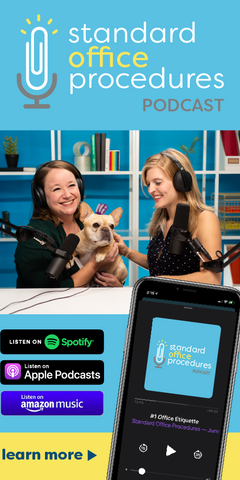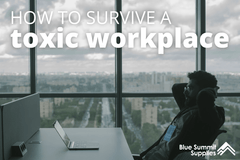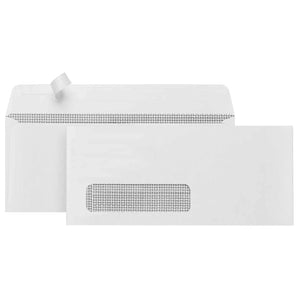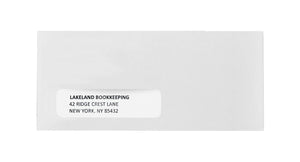Today, Parental Leave Policy is a hot-button topic that affects a majority of working Americans. Whether you or your partner are looking to have a baby, foster, or adopt, or you have responsibility within a company for overseeing such policies, the issue of flexible paid parental leave will probably affect you. In this article, we’ve cover:
- What exactly parental leave policy means
- Why it’s important
- What it looks like in the United States as compared to other countries
- How to go about implementing a paid parental leave policy at your business
Overview of Parental Leave Policy
Parental Leave — or Family Leave — Policy essentially means paid or protected time off for new parents. New parents can be men or women, regardless of sexual orientation, who are having a biological baby or who are adopting a child or receiving a foster child.
Why It’s Important
Why does Parental Leave matter, you may ask? Current research shows the unequivocal benefits of paid parental leave when parents are welcoming a new child into their lives. The benefits include both the health of the parents and new child as well as the productivity of the employee in question.
Health of Child
It’s no secret that the longer a newborn baby stays with their mother, the healthier they will be. The World Health Organization actually recommends between 14 and 17 weeks of maternity leave for the health of the mother and infant. Even longer leaves, up to 25 weeks, are associated with a lower risk of infant mortality. Additionally, a 2017 study found that women who took a paid maternity leave experienced a 47% less chance of re-hospitalizing their infants and 51% less chance of re-hospitalizing themselves after giving birth, compared to women who did not take paid maternity leave.
Breastfeeding is another huge factor in the health of newborn babies and is highly impacted by maternity leave. The American Academy of Pediatrics recommends six exclusive months of breastfeeding due to the fact that asthma, obesity, sudden infant death syndrome (SIDS), type 2 diabetes, and gastrointestinal infections are all less likely to occur in breastfed babies. Furthermore, research shows that it’s far easier for new mothers to breastfeed when they aren’t working. So it’s no wonder that paid maternity leave is considered optimal for the health of the baby!
Health of Mother
For new mothers who return to work before their bodies have fully healed from childbirth, studies have shown that their immune systems can be compromised. There is also the issue of postpartum depression, or depression that occurs directly after childbirth. Symptoms of postpartum depression include anxiety, slowed speaking, temporary memory problems, feelings of sadness, and physical pains. Current data shows that postpartum depression effects about 15% of women. The National Institute of Child Health and Human Development conducted a study of new mothers and found that mothers who worked more hours during their postpartum period experienced higher levels of depression. Additionally, more depressive symptoms occurred in women when their spouses did not take parental leave as well.
Productivity and Economic Benefits
Studies show that for new parents, maintaining a balance between professional and parental duties creates a huge strain on their psychological state. In fact, a 2016 study conducted by EY found that more than 80% of companies that offered paid family leave reported higher office morale and over 70% of those companies reported higher employee efficiency. Not to mention offering a paid family leave policy is just good business. Many business professionals actively seek out a competitive parental leave policy when deciding where to work. A good leave policy also helps with employee retention, with paid leave making it more likely that a new mother will return to work for the same employee after her leave. For example, when Google increased its paid maternity leave from 12 to 18 weeks, they reported that the female employee turnover rate after maternity leave dropped by 50%.

Parental Leave Policy in the United States
It may surprise you to know that the only federally regulated parental leave policy in the United States is the Family and Medical Leave Act (FMLA) of 1993, which offers 12 weeks of unpaid leave for a variety of personal reasons, including having a child. What’s more, the FMLA only applies to companies with more than 50 employees. Small companies currently don’t have any federal protection for parental leave.
What are the implications for employees in the United States? Basically, families must rely on state-wide and/or company-specific protections for Parental Leave.
Parental Leave Policy by US State and Company
Currently, there are only four states with paid family leave in the Unites States: California, Massachusetts, New Jersey and Rhode Island. However, several other states look to be following suit soon.
With that being said, it’s mostly up to the individual companies in the United States to provide paid parental leave. Below are five of the best examples of corporate paid parental leave by company, according to Business Insider.
- Freddie Mac – This company provides 12 weeks of paid parental leave as well as up to $30,000 in support for parents looking to adopt, and lactation support for new mothers.
- 3M Co. – This company provides 20 weeks of parental leave for all employees, with 10 of those weeks being paid.
- Alphabet – Google’s parent company offers 18 weeks of paid parental leave.
- Microsoft – New mothers get 20 weeks of paid maternity leave and all other parents get 12 weeks of paid parental care.
- Capital One – This company offers 18 weeks of paid maternity leave for birth mothers with options for mothers to return to work gradually over time. All other parents get 8 weeks of paid parental leave.
Other Countries’ Parental Leave Policies
Given all this information, you may be interested to know how other countries around the world handle parental leave and how they stack up against the United States. Many countries pay mothers their entire salary during paid maternity leave, although some countries pay only a portion. According to the OECD Family Database, most developed nations pay new mothers at least half of their salary during leave. Below is a quick look at how other countries approach paid family leave policies:
- Austria – 16 weeks off with 100% of original salary (although maternity leave must start 8 weeks before the birth of the baby)
- Bulgaria – 58 weeks off with an average pay of 78% of original salary
- Canada – 17 weeks off with an average pay of 48% of original salary
- Estonia – 20 weeks off with 100% of original salary
- Finland – 17.5 weeks off with 74% of original salary
- Germany – 14 weeks off with 100% of original salary
- Greece – 43 weeks off with 54% of original salary
- Ireland – 26 weeks off with 34% of original salary
- Lithuania – 18 weeks off with 100% of original salary
- Mexico – 12 weeks off with 100% of original salary
- New Zealand – 18 weeks off with 42% of original salary (with reports that it is increasing to 22 weeks this year)
- Portugal – 6 weeks off with 100% of original salary
- Spain – 16 weeks off with 100% of original salary
- The United Kingdom – 52 weeks off, but with only 39 weeks paid at 39% of original salary
Guidelines for Implementing Paid Parental Leave Policy
How exactly should you go about implementing a paid parental leave policy for your business? Below, we’ve compiled some helpful tips and guidelines when trying to navigate this issue at work.
- Research other businesses comparable in size and scope to yours and what policies they have in place. Are those policies successful? How could you improve upon them?
- Consider the needs of the parents. No one is going to know the needs of new parents better than the parents themselves. Consider holding an anonymous survey to ask what policy features would best suit employees.
- Review the budget. Based on your specific business, your needs and allowances will be different from other companies. Figure out just how much paid leave your business can afford and make sure to balance that with other factors, like employee retention.
- Know your state’s rules. As stated earlier, some states have specific rules and regulations regarding paid parental leave and you need to make sure you are in compliance.
- Write the policy and have it reviewed. Your leadership, stakeholders, or other parties will probably want to have a look at the policy before it goes live. Make sure you have all the proper sign offs.
- Once the policy is written up, meet with employees to explain the policy and ask for feedback. Be patient with questions and know that you may need to make revisions before you arrive at the perfect policy for your company.
Check out an example of a paid parental leave policy here.
All in all, there’s a lot to consider in terms of paid parental leave policies, especially in the United States. It’s a hugely important issue, to the health of the baby, the parents, and to the success of the business. As we head into the future, these policies have the potential to change or overturn, so it’s always best to stay on top of the information and make decisions that benefit both you and your employees.
Do you love office talk as much as we do? Follow our office supplies blog for the latest office trends, team building strategies, product comparisons, and more.
If you have any questions or want to talk to someone about office supplies, send us an email or connect with us on Twitter, Facebook, or Instagram.
 For more informative articles about office supplies, subscribe to our email newsletter!
For more informative articles about office supplies, subscribe to our email newsletter!
Never fear, you won't begin receiving daily sales emails that belong in a spam folder. Instead, we promise a fun weekly roundup of our latest blog posts and great finds from across the web. And if you lose interest, it's always easy to unsubscribe with a single click.









